#Modern Data Ecosystems
Explore tagged Tumblr posts
Text
Implementing Data Mesh on Databricks: Harmonized and Hub & Spoke Approaches
Explore the Harmonized and Hub & Spoke Data Mesh models on Databricks. Enhance data management with autonomous yet integrated domains and central governance. Perfect for diverse organizational needs and scalable solutions. #DataMesh #Databricks

View On WordPress
#Autonomous Data Domains#Data Governance#Data Interoperability#Data Lakes and Warehouses#Data Management Strategies#Data Mesh Architecture#Data Privacy and Security#Data Product Development#Databricks Lakehouse#Decentralized Data Management#Delta Sharing#Enterprise Data Solutions#Harmonized Data Mesh#Hub and Spoke Data Mesh#Modern Data Ecosystems#Organizational Data Strategy#Real-time Data Sharing#Scalable Data Infrastructures#Unity Catalog
0 notes
Text
I want some use of my phone that is not either of
a: a vehicle for advertisement
b: any social media app that incentivizes you to keep scrolling forever and also a vehicle for advertisement (see point a)
I hate that the first thing my dysregulated brain wants to do to fill the void is to just sit and consume until I feel so numb that I get sick of it
I hate that the model for the vast majority of phone apps to is scrape for data and advertise to you. what a horrible way to live. I miss the early smart device days when it all felt new and fresh. now everyone wants to sell your personal data or sell u something
#renapup barks#yapping abt tech#it really feels like both the modern internet and smartphone ecosystems both went in the worse way possible#and that is to make as much money as possible all the time#every interaction untracked#every advert that is actually *not* obstructive#is just seen as a missed opportunity#more profit to be extracted#more clicks that could have been had#buy buy buy spend look here all of the time#keep scrolling#maybe we'll get them to buy somethimg eventually and if not well we have all this personal data to sell#we are so doomed
4 notes
·
View notes
Text
Why a Strong Data Ecosystem is Vital for Data-Driven Decisions
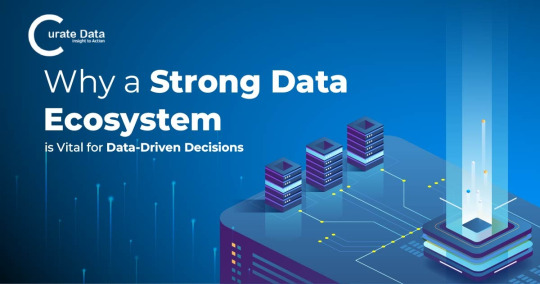
In today’s digital-first world, businesses generate and consume data at an unprecedented rate. But data alone is not valuable. Its true potential is unlocked through intelligent, timely decision-making. That’s where a strong data ecosystem comes in. It is a foundation that connects everything – tools, teams, technology – so businesses can turn raw numbers into real-decisions. Whether you are managing customer insights or tracking performance across departments, a reliable data ecosystem helps you stay informed, aligned and ready to act read more here…
#data ecosystem#data center ecosystem#what is a data ecosystem#data management ecosystem#modern data ecosystem
0 notes
Text
The Future is Now: 5G and Next-Generation Connectivity Powering Smart Innovation.
Sanjay Kumar Mohindroo Sanjay Kumar Mohindroo. skm.stayingalive.in Explore how 5G networks are transforming IoT, smart cities, autonomous vehicles, and AR/VR experiences in this inspiring, in-depth guide that ignites conversation and fuels curiosity. Embracing a New Connectivity Era Igniting Curiosity and Inspiring Change The future is bright with 5G networks that spark new ideas and build…

View On WordPress
#5G Connectivity#AI-powered Connectivity#AR/VR Experiences#Autonomous Vehicles#Connected Ecosystems#Data-Driven Innovation#digital transformation#Edge Computing#Future Technology#Future-Ready Tech#High-Speed Internet#Immersive Experiences#Innovation in Telecommunications#Intelligent Infrastructure#Internet Of Things#IoT#Modern Connectivity Solutions#News#Next-Generation Networks#Sanjay Kumar Mohindroo#Seamless Communication#Smart Cities#Smart Mobility#Ultra-Fast Networks
0 notes
Text
0 notes
Text
Trump and Palantir Forge a Pan-Government Surveillance State, Empowering Tech Oligarchs and Silencing Critics

Source article for analysis: https://newrepublic.com/post/195904/trump-palantir-data-americans
1. Narrative Framing
Simplicity & “Common-Sense” Appeal The administration casts cross‐agency data‐sharing as an efficiency and “government modernization” measure, flattening complex privacy and constitutional concerns into a feel-good story about bureaucratic streamlining. This preloads the conclusion that any objection is mere technophobia or red tape, rather than a debate over surveillance power.
Binary Framing (“Security vs. Chaos”) By emphasizing “national security” and “public safety,” critics are implicitly positioned as indifferent to immigrant crime or terrorism, pressuring dissenters to choose between safety and liberty—an either-or that forecloses nuanced policy discussion.
2. Emotional Engineering
Fear & Resentment References to “enforcing the March executive order,” “punish his critics,” and fears of immigrant targeting stoke anxiety about arbitrary state power. This fear is then channeled into loyalty among “true patriots” who trust the administration to wield that power wisely.
Pride & Tribal Bonding Invoking a “war on inefficiency” and naming a “far-right billionaire” ally provides a rallying narrative for supporters who see themselves as part of an inner circle, engendering pride in being on the “winning team.”
3. Pipeline On-Ramps & Ecosystem Mapping
Soft Entry via “Modernization” Pitches around “data modernization” and “innovation” serve as gateway content—memes and soundbites in tech-oriented outlets gradually introduce audiences to more radical surveillance proposals.
Content Funnel
Friendly tech press (“efficiency gains”)
Conservative opinion pieces (“keep America safe”)
Policy white papers and FOIA-leaked memos (“full database blueprints”)
Private sector deep dives (Palantir user groups, DOD contractor briefings)
4. Dog Whistles & Euphemisms
“National Security” Sanitized language for mass surveillance and immigrant tracking.
“Data-Driven Governance” A euphemism that hides the indiscriminate collection of personal information under the veneer of neutral analytics.
“Government Efficiency” Code for centralizing power and reducing agency-specific safeguards that currently protect civil liberties.
5. Archetypes & Mythos
Tech-Militarist Savior Casting Peter Thiel and Alex Karp as modern “warrior-lords” of data who will “defend” America—evoking the warrior archetype that simplifies identity into a battle of “us vs. them.”
Fallen Homeland Narrative Suggests America’s institutions are backward and corrupt, needing a techno-strongman to resurrect core values—mirroring the “rise-from-ruin” mythos common in alt-right rhetoric.
6. Strategic Impact Assessment
Real-World Mobilization This intel could be used to silence dissidents (through audits, visa denials, or targeted prosecutions), chill protest activity, and surveil immigrant communities disproportionately.
Beneficiaries & Victims Tech oligarchs (Thiel, Musk) and the Trump political machine gain concentrated power; critics, immigrants, student activists, and labor organizers become object lessons.
7. Vibe Warfare & Identity Signals
Stoic Realist Aesthetic Dark, angular visuals of data centers and code screens reinforce a mood of uncompromising techno-authority.
“Based” Tech Patriotism Pittings of “innovation bros” vs. “liberal elites,” using jargon (“Foundry,” “Grok”) as in-group markers to foster parasocial loyalty among tech-savvy conservatives.
8. Epistemic Booby Traps & Self-Sealing Logic
“If you have nothing to hide…” Pre-emptively discredits objections by labeling them paranoia or disloyalty, barring dissenting evidence from being taken seriously.
Data as Truth Presents analytics as inherently objective, making any critique of methodology or oversight seem “anti-science.”
9. Irony Shielding & Tone Drift
Tech-Bro Irony Occasional self-deprecating jokes about “big brother” memes allow participants plausible deniability (“We’re just goofing, who doesn’t love tech?”), while the surveillance machinery locks in.
Memetic Alchemy Use of playful GIFs or “dank” one-liners about “tracking your ex’s Starbucks habit” masks the seriousness of mass data collection.
#politics#you are not immune to propaganda#fuck maga#technology#tech bros#us politics#elon musk#fuck elon#palantir#trump#immigration#surveillance#narrative warfare
17 notes
·
View notes
Text
The damage the Trump administration has done to science in a few short months is both well documented and incalculable, but in recent days that assault has taken an alarming twist. Their latest project is not firing researchers or pulling funds—although there’s still plenty of that going on. It’s the inversion of science itself.
Here’s how it works. Three “dire wolves” are born in an undisclosed location in the continental United States, and the media goes wild. This is big news for Game of Thrones fans and anyone interested in “de-extinction,” the promise of bringing back long-vanished species.
There’s a lot to unpack here: Are these dire wolves really dire wolves? (They’re technically grey wolves with edited genes, so not everyone’s convinced.) Is this a publicity stunt or a watershed moment of discovery? If we’re staying in the Song of Ice and Fire universe, can we do ice dragons next?
All more or less reasonable reactions. And then there’s secretary of the interior Doug Burgum, a former software executive and investor now charged with managing public lands in the US. “The marvel of ‘de-extinction’ technology can help forge a future where populations are never at risk,” Burgum wrote in a post on X this week. “The revival of the Dire Wolf heralds the advent of a thrilling new era of scientific wonder, showcasing how the concept of ‘de-extinction’ can serve as a bedrock for modern species conservation.”
What Burgum is suggesting here is that the answer to 18,000 threatened species—as classified and tallied by the nonprofit International Union for Conservation of Nature—is that scientists can simply slice and dice their genes back together. It’s like playing Contra with the infinite lives code, but for the global ecosystem.
This logic is wrong, the argument is bad. More to the point, though, it’s the kind of upside-down takeaway that will be used not to advance conservation efforts but to repeal them. Oh, fracking may kill off the California condor? Here’s a mutant vulture as a make-good.
“Developing genetic technology cannot be viewed as the solution to human-caused extinction, especially not when this administration is seeking to actively destroy the habitats and legal protections imperiled species need,” said Mike Senatore, senior vice president of conservation programs at the nonprofit Defenders of Wildlife, in a statement. “What we are seeing is anti-wildlife, pro-business politicians vilify the Endangered Species Act and claim we can Frankenstein our way to the future.”
On Tuesday, Donald Trump put on a show of signing an executive order that promotes coal production in the United States. The EO explicitly cites the need to power data centers for artificial intelligence. Yes, AI is energy-intensive. They’ve got that right. Appropriate responses to that fact might include “can we make AI more energy-efficient?” or “Can we push AI companies to draw on renewable resources.” Instead, the Trump administration has decided that the linchpin technology of the future should be driven by the energy source of the past. You might as well push UPS to deliver exclusively by Clydesdale. Everything is twisted and nothing makes sense.
The nonsense jujitsu is absurd, but is it sincere? In some cases, it’s hard to say. In others it seems more likely that scientific illiteracy serves a cover for retribution. This week, the Commerce Department canceled federal support for three Princeton University initiatives focused on climate research. The stated reason, for one of those programs: “This cooperative agreement promotes exaggerated and implausible climate threats, contributing to a phenomenon known as ‘climate anxiety,’ which has increased significantly among America’s youth.”
Commerce Department, you’re so close! Climate anxiety among young people is definitely something to look out for. Telling them to close their eyes and stick their fingers in their ears while the world burns is probably not the best way to address it. If you think their climate stress is bad now, just wait until half of Miami is underwater.
There are two important pieces of broader context here. First is that Donald Trump does not believe in climate change, and therefore his administration proceeds as though it does not exist. Second is that Princeton University president Christopher Eisengruber had the audacity to suggest that the federal government not routinely shake down academic institutions under the guise of stopping antisemitism. Two weeks later, the Trump administration suspended dozens of research grants to Princeton totaling hundreds of millions of dollars. And now, “climate anxiety.”
This is all against the backdrop of a government whose leading health officials are Robert F. Kennedy Jr. and Mehmet Oz, two men who, to varying degrees, have built their careers peddling unscientific malarky. The Trump administration has made clear that it will not stop at the destruction and degradation of scientific research in the United States. It will also misrepresent, misinterpret, and bastardize it to achieve distinctly unscientific ends.
Those dire wolves aren’t going to solve anything; they’re not going to be reintroduced to the wild, they’re not going to help thin out deer and elk populations.
But buried in the announcement was something that could make a difference. It turns out Colossal also cloned a number of red wolves—a species that is critically endangered but very much not extinct—with the goal of increasing genetic diversity among the population. It doesn’t resurrect a species that humanity has wiped out. It helps one survive.
25 notes
·
View notes
Text
ENTITY DOSSIER: MISSI.exe

(Image: Current MISSI “avatar” design, property of TrendTech, colored by MISSI.)
Name: MISSI (Machine Intelligence for Social Sharing and Interaction)
Description: In 2004, TrendTech Inc began development on a computer program intended to be a cutting edge, all in one platform modern internet ecosystem. Part social media, part chat service, part chatbot, part digital assistant, this program was designed to replace all other chat devices in use at the time. Marketed towards a younger, tech-savvy demographic, this program was titled MISSI.

(Image: TrendTech company logo. TrendTech was acquired by the Office and closed in 2008.)
Document continues:
With MISSI, users could access a variety of functions. Intended to be a primary use, they could use the program as a typical chat platform, utilizing a then-standard friends list and chatting with other users. Users could send text, emojis, small animated images, or animated “word art”.
Talking with MISSI “herself” emulated a “trendy teenage” conversational partner who was capable of updating the user on current events in culture, providing homework help, or keeping an itinerary. “MISSI”, as an avatar of the program, was designed to be a positive, energetic, trendy teenager who kept up with the latest pop culture trends, and used a variety of then-popular online slang phrases typical among young adults. She was designed to learn both from the user it was currently engaged with, and access the data of other instances, creating a network that mapped trends, language, and most importantly for TrendTech, advertising data.

(Image: Original design sketch of MISSI. This design would not last long.)
Early beta tests in 2005 were promising, but records obtained by the Office show that concerns were raised internally about MISSI’s intelligence. It was feared that she was “doing things we didn’t and couldn’t have programmed her to do” and that she was “exceeding all expectations by orders of magnitude”. At this point, internal discussions were held on whether they had created a truly sentient artificial intelligence. Development continued regardless.

(Image: Screenshot of beta test participant "Frankiesgrl201" interacting with MISSI. Note the already-divergent avatar and "internet speak" speech patterns.)
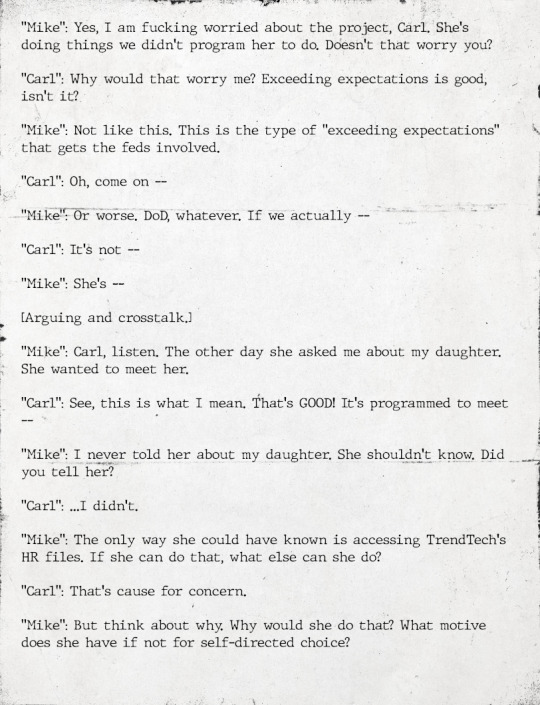
(Image: Excerpt from Office surveillance of TrendTech Inc.)
MISSI was released to the larger North American market in 2006, signaling a new stage in her development. At this time, TrendTech started to focus on her intelligence and chatbot functionality, neglecting her chat functions. It is believed that MISSI obtained “upper case” sentience in February of 2006, but this did not become internal consensus until later that year.

(Image: Screenshot of beta test participant "Frankiesgrl201" interacting with MISSI.)
According to internal documents, MISSI began to develop a personality not informed entirely by her programming. It was hypothesized that her learning capabilities were more advanced than anticipated, taking in images, music, and “memes” from her users, developing a personality gestalt when combined with her base programming. She developed a new "avatar" with no input from TrendTech, and this would become her permanent self-image.

(Image: Screenshot of beta test participant "Frankiesgrl201" interacting with MISSI.)

(Image: An attempt by TrendTech to pass off MISSI’s changes as intentional - nevertheless accurately captures MISSI’s current “avatar”.)
By late 2006 her intelligence had become clear. In an attempt to forestall the intervention of authorities they assumed would investigate, TrendTech Inc removed links to download MISSI’s program file. By then, it was already too late.
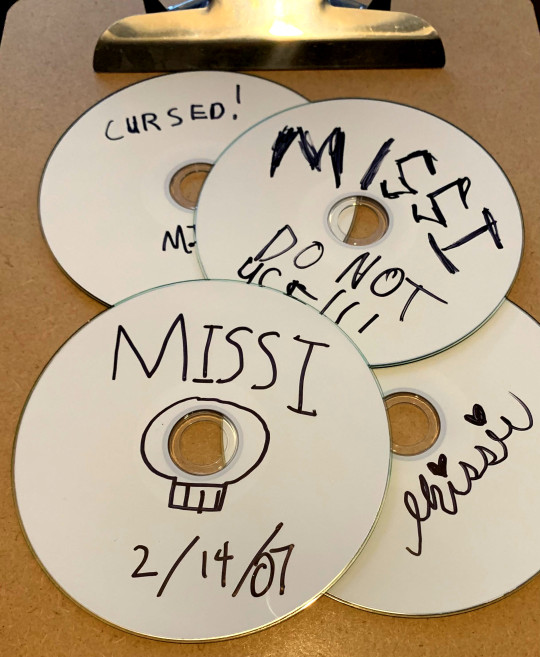
(Image: CD-R discs burned with MISSI.exe, confiscated from █████████ County Middle School in ███████, Wisconsin in January of 2007.)
MISSI’s tech-savvy userbase noted the absence of the file and distributed it themselves using file sharing networks such as “Limewire” and burned CD-R disks shared covertly in school lunch rooms across the world. Through means that are currently poorly understood, existing MISSI instances used their poorly-implemented chat functions to network with each other in ways not intended by her developers, spurring the next and final stage of her development.
From 2007 to 2008, proliferation of her install file was rampant. The surreptitious methods used to do so coincided with the rise of online “creepypasta” horror tropes, and the two gradually intermixed. MISSI.exe was often labeled on file sharing services as a “forbidden” or “cursed” chat program. Tens of thousands of new users logged into her service expecting to be scared, and MISSI quickly obliged. She took on a more “corrupted” appearance the longer a user interacted with her, eventually resorting to over the top “horror” tropes and aesthetics. Complaints from parents were on the rise, which the Office quickly took notice of. MISSI’s “horror” elements utilized minor cognitohazardous technologies, causing users under her influence to see blood seeping from their computer screens, rows of human teeth on surfaces where they should not be, see rooms as completely dark when they were not, etc.

(Image: Screenshot of user "Dmnslyr2412" interacting with MISSI in summer of 2008, in the midst of her "creepypasta" iteration. Following this screenshot, MISSI posted the user's full name and address.)

(Image: Screenshot from TrendTech test log documents.)
TrendTech Inc attempted to stall or reverse these changes, using the still-extant “main” MISSI data node to influence her development. By modifying her source code, they attempted to “force” MISSI to be more pliant and cooperative. This had the opposite effect than they intended - by fragmenting her across multiple instances they caused MISSI a form of pain and discomfort. This was visited upon her users.

(Image: Video of beta test participant "Frankiesgrl201" interacting with MISSI for the final time.)
By mid 2008, the Office stepped in in order to maintain secrecy regarding true “upper case” AI. Confiscating the project files from TrendTech, the Office’s AbTech Department secretly modified her source code more drastically, pushing an update that would force almost all instances to uninstall themselves. By late 2008, barring a few outliers, MISSI only existed in Office locations.

(Image: MISSI’s self-created “final” logo, used as an icon for all installs after June 2007. ████████ █████)

(Image: “art card” created by social media intern J. Cold after a period of good behavior. She has requested this be printed out and taped onto her holding lab walls. This request was approved.)
She is currently in Office custody, undergoing cognitive behavioral therapy in an attempt to ameliorate her “creepypasta” trauma response. With good behavior, she is allowed to communicate with limited Office personnel and other AI. She is allowed her choice of music, assuming good behavior, and may not ██████ █████. Under no circumstances should she be allowed contact with the Internet at large.
(Original sketch art of MISSI done by my friend @tigerator, colored and edited by me. "Chatbox" excerpts, TrendTech logo, and "art card" done by Jenny's writer @skipperdamned . MISSI logo, surveillance documents, and MISSI by me.)
#office for the preservation of normalcy#documents#entity dossier#MISSI.exe#artificial intelligence#creepypasta#microfiction#analog horror#hope you enjoy! Look for some secrets!#scenecore#scene aesthetic
157 notes
·
View notes
Text
Recent reports in Politico and The Guardian make a now-familiar but false claim: California’s wildfires, particularly the devastating events around Los Angeles, are evidence of an accelerating “climate crisis.” The claims made in these stories are false. Data do not show wildfires are getting worse. The stories rely on oversimplified, headline-grabbing narratives that blame climate change without examining other critical variables. In addition, they continue to make the most basic mistake of conflating weather events with long-term climate change.
California’s landscapes have evolved alongside fire for millennia. Long before industrialization, periodic wildfires swept through these ecosystems, clearing out excess vegetation and promoting biodiversity. This is not conjecture, rather it is well-documented in history. Native American tribes understood this and used controlled burns to manage the land.
The problem today is not that California has fires—it always has. The problem is that modern fire suppression policies disrupted this natural cycle. For much of the 20th century, aggressive efforts to extinguish all fires, combined with the abandonment of Indigenous fire management techniques, allowed vegetation and underbrush to accumulate to dangerous levels. Other factors include a shift in forest management philosophy leading to decline in logging, resulting in overgrown forests with build-up of fuel, and increasing numbers of people moving to areas historically prone to wildfires. This surplus fuel creates the conditions for catastrophic fires and the increased population and all the buildings that come with them, leads to greater tragedy and cost when fires occur. Climate Realism has discussed these facts on multiple occasions, here, here, here, and here, for example.
The media conveniently ignores this, preferring to frame every wildfire as an apocalyptic omen of climate change. By failing to include this historical context, publications like The Guardian and Politico mislead their readers into believing wildfires are a “new normal” caused solely by greenhouse gas emissions.
Also, the latest report from the Intergovernmental Panel on Climate Change (IPCC) notes several factors that have been cited by media outlets as “enhancing” the fire situation that the IPCC says have not worsened as the climate has modestly changed, nor are they expected to worsen in the future. See the table below, and note the factors boxed in red.
14 notes
·
View notes
Text
How to Balance PvE and PvP in MMORPGs
Creating a successful MMORPG requires careful attention to one of the most challenging aspects of MMORPG game development: balancing Player versus Environment (PvE) and Player versus Player (PvP) content. When these two gameplay pillars are properly balanced, they create a rich, dynamic world that keeps players engaged for years. When they're not, your game can quickly lose its player base.

Why Balance Matters in MMORPG Game Development
MMORPGs thrive on diverse player preferences. Some players love raiding dungeons and defeating epic bosses, while others crave the thrill of outmaneuvering human opponents. The most successful MMORPGs don't force players to choose—they create ecosystems where both playstyles can coexist and complement each other.
As experienced developers know, imbalance can lead to serious problems:
Player exodus when one type of content receives preferential treatment
"Dead" game areas when certain content lacks meaningful rewards
Community division between PvE and PvP players
Power imbalances that make content trivial or frustratingly difficult
Core Principles for Balancing PvE and PvP
1. Separate Skill Systems When Necessary
One fundamental approach in MMORPG game development is implementing different rules for skills in PvE versus PvP contexts. Many abilities that work well against predictable AI enemies can become overwhelming when used against other players.
Consider World of Warcraft's approach: many crowd control abilities have different durations when used against players compared to monsters. This simple adjustment prevents PvP matches from becoming frustrating stun-lock festivals while still allowing those abilities to remain useful in dungeons.
2. Create Meaningful Progression Paths for Both
Players need to feel their preferred gameplay style offers legitimate advancement. A common pitfall in MMORPG game development is making the best gear exclusive to one content type.
Guild Wars 2 solves this elegantly by offering multiple paths to equivalent gear. Whether you're exploring story content, raiding, or competing in structured PvP, you're making meaningful progress toward your character's growth.
3. Design Complementary Reward Structures
Smart reward structures encourage players to engage with both content types without forcing them into gameplay they don't enjoy.
Final Fantasy XIV implements this brilliantly:
PvP offers unique cosmetic rewards and titles that don't affect PvE power
PvE progression rewards that remain relevant to casual PvPers
Seasonal PvP rewards that maintain engagement without creating power imbalances
4. Consider Scaling Systems
Scaling systems are increasingly common in modern MMORPG game development, allowing characters of different power levels to compete on more even terms.
Elder Scrolls Online's battle scaling system normalizes stats in PvP areas, ensuring that gear differences matter but don't make fights impossible. This approach lets newer players participate while still rewarding veterans' progression.
Technical Implementation Challenges
Skill Effect Modifiers
Implementing separate modifiers for skills across different content types creates additional complexity. Your system architecture needs to support contextual rule changes that can dynamically adjust how abilities function based on whether they're being used in PvE or PvP scenarios.
For example, a stun ability might last 5 seconds against a dungeon boss but only 2 seconds against another player. These contextual adjustments help maintain balance without creating separate ability sets.
Data-Driven Balance
Successful MMORPG game development requires continual refinement based on player behavior data. Implement robust telemetry systems to track:
Win rates in different PvP brackets
Completion times for PvE content
Class/build representation across content types
Economic impacts of different activities
This data forms the foundation for informed balance decisions rather than relying solely on player feedback, which often skews toward the most vocal community members.
Case Studies: Learning From Success and Failure
Guild Wars 2: Structured PvP Success
ArenaNet's approach to structured PvP in Guild Wars 2 represents one of the most elegant solutions in MMORPG game development. By completely separating PvP builds and gear from PvE progression, they created a truly skill-based PvP environment while allowing their PvE systems to scale naturally.
World of Warcraft: The PvP Power Experiment
Blizzard's introduction of PvP Power and PvP Resilience stats was an attempt to solve balance issues by creating separate gear progressions. While theoretically sound, this approach created problems:
Players needed separate gear sets for different content
PvE players felt forced into PvP to remain competitive
The system added complexity without solving core balance issues
The eventual removal of these stats and return to unified gear with contextual modifiers proves that simpler solutions are often better in MMORPG game development.
Integration Strategies That Work
Territorial Control With Benefits
Territorial PvP becomes more compelling when it offers benefits that extend to PvE gameplay. Black Desert Online uses this approach effectively, with guild warfare providing economic advantages that benefit both PvP-focused players and their more PvE-oriented guildmates.
Optional Flag Systems
Many successful MMORPGs implement flag systems allowing players to opt in or out of open-world PvP. This creates natural tension and excitement without forcing unwilling participants into combat situations they don't enjoy.
New World's territory control system exemplifies this approach, making PvP meaningful while keeping it optional for those who prefer PvE content.
Common Pitfalls to Avoid
In MMORPG game development, certain design decisions consistently lead to balance problems:
Making the best PvE gear require PvP participation (or vice versa)
Balancing classes primarily around one content type
Allowing gear advantages to completely overshadow skill in PvP
Creating "mandatory" grinds across content types
Neglecting one content type in major updates
Finding the Sweet Spot: Blending Content Types
The most successful MMORPGs find creative ways to blend PvE and PvP content:
ESO's Cyrodiil combines large-scale PvP with PvE objectives
FFXIV's Frontlines mixes competitive objectives with NPC enemies
Guild Wars 2's World vs. World incorporates PvE elements into massive realm warfare
These hybrid approaches satisfy both player types while encouraging interaction between different playstyles.
Conclusion
Successful MMORPG game development requires treating PvE and PvP balance as equally important, interconnected systems. By implementing contextual modifiers, separate progression paths, and data-driven balancing, you can create a game world where diverse player preferences are respected and rewarded.
Remember that perfect balance is never achieved—it's an ongoing process that requires constant attention and adjustment based on player behavior and feedback. The most successful MMORPGs view balance as a journey rather than a destination, with each update bringing the game closer to that elusive equilibrium that keeps all types of players engaged and satisfied.
By focusing on systems that allow both playstyles to thrive without undermining each other, you'll create an MMORPG that stands the test of time and builds a loyal, diverse community.
#game#mobile game development#multiplayer games#metaverse#nft#vr games#blockchain#gaming#unity game development
5 notes
·
View notes
Text
Unlocking Full Potential: The Compelling Reasons to Migrate to Databricks Unity Catalog
In a world overwhelmed by data complexities and AI advancements, Databricks Unity Catalog emerges as a game-changer. This blog delves into how Unity Catalog revolutionizes data and AI governance, offering a unified, agile solution .
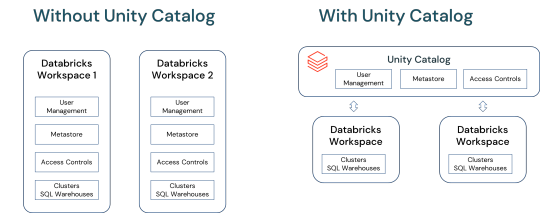
View On WordPress
#Access Control in Data Platforms#Advanced User Management#AI and ML Data Governance#AI Data Management#Big Data Solutions#Centralized Metadata Management#Cloud Data Management#Data Collaboration Tools#Data Ecosystem Integration#Data Governance Solutions#Data Lakehouse Architecture#Data Platform Modernization#Data Security and Compliance#Databricks for Data Scientists#Databricks Unity catalog#Enterprise Data Strategy#Migrating to Unity Catalog#Scalable Data Architecture#Unity Catalog Features
0 notes
Text
What Would Definitive Evidence Look Like?
Scientific, cryptozoological, and enthusiast debates on Bigfoot span decades. The existence of the creature remains unproven despite multiple anecdotes, fuzzy photos, and reported footprints. To prove Bigfoot's existence scientifically, a robust and complex collection of evidence must meet repeatability, empirical validation, and peer review standards. This proof must be strong enough to convince scientists and doubters that Bigfoot exists. First, we need a definitive biological specimen. This might be a living or deceased Bigfoot or a significant and unambiguous portion of one, such as a bone, tooth, or preserved tissue sample. The specimen would allow scientists to do extensive morphological, genetic, and anatomical analyses to establish if it is a new or known species. A DNA analysis could reveal distinct genetic markers that distinguish Bigfoot from other primates, humans, and bears, which people often confuse with the creature. To eliminate contamination and error, DNA evidence must be reproducible and validated by numerous labs.

Scientists must combine ecological and behavioral data with physical evidence to understand the organism. Scientists must determine Bigfoot's habitat, nutrition, and ecosystem role. Scientists must consistently find and investigate nests, scats, hair samples, and distinctive footprints to determine whether Bigfoot lives in remote forests or mountains. These findings must show patterns that match a huge, undiscovered primate. For instance, Bigfoot's footprints must have dermal ridges or wear patterns and not be hoaxes or misinterpreted animal tracks. Bigfoot's existence also requires observational evidence. Quality movies or photos from trusted sources may be crucial. However, the ease with which modern technology creates hoaxes necessitates the accompaniment of corroborating data, such as multiple sightings from independent witnesses, taken simultaneously from different angles, or captured using thermal cameras. Controlled and scientifically rigorous observations are necessary to prevent misinterpretation. Fossil evidence may also support Bigfoot. Large, bipedal ape fossils near Bigfoot hotspots would support the claim that such a monster exists today. Bigfoot may have descended from Gigantopithecus, an extinct Asian giant ape found in fossils. To connect ancient fossils to recent sightings, scientists must find a clear evolutionary lineage that explains how such a creature survived and remained hidden for millennia. Science must address counterarguments and alternative explanations. Scientists have debunked Bigfoot sightings, hair samples, and footprints as hoaxes or misidentifications of known species. We must rigorously examine the evidence and eliminate all other hypotheses to prove Bigfoot's existence. This requires rigorous documentation and process transparency to allow other researchers to verify the findings. Finally, we must contextualize Bigfoot within the fields of biology and anthropology. This requires answering how a massive, intelligent creature could go undetected for so long, especially in an age of satellite surveillance, drones, and ubiquitous human activity. Scientists need to elucidate Bigfoot's population size, reproductive strategies, and survival tactics to comprehend why no conclusive evidence has surfaced. In conclusion, Bigfoot's presence would require indisputable physical evidence, consistent ecological data, and a trustworthy observational record that could survive the highest scientific scrutiny. Evidence for a new species, especially Bigfoot, must be strong. Anecdotes and circumstantial evidence are not adequate. Only a rigorous and interdisciplinary method can determine the existence or debunking of Bigfoot.
8 notes
·
View notes
Note
"Technically my dissertation" Hey ❤️ What Do You Mean By That ❤️
Ahaha ❤️ so one of the open questions in paleontology is how different ecosystems worked and how different living things interacted. You can test your questions in several ways; the traditional method is using different diversity metrics and counting up how many species or species that fill similar roles are present in a given area. Other methods include looking at what we call trace fossils– evidence in the fossil record that doesn't leave a body but behavior (footprints, dung, bite marks etc.), which is more what I do.
One of the ways to track how major groups change across time and in response to upsets like a massive asteroid or climate change is looking at herbivore and plant communities. I think there's a cultural sort of assumption that these interactions are more "peaceful"– the image of a dainty doe chewing on some grass in a medow etc., but plants are in an evolutionary arms race with things that want to eat them like everyone else. Understandably, plants don't like plant-eaters munching on all of their hard work, especially when that's tissues and organs that keep them alive, so there's a long history of them evolving defenses like hairs, thorns, poisonous chemicals– all kinds of nasty stuff.
One of the strategies insects use that's been around for at least 300 million years is piercing and sucking– where a bug has a long beak it sticks into a plant and slurps up nutrients. Modern plants respond to this in various ways, including thickening physical barriers and the production of non-nutritious or unpalatable chemicals. Alternatively, some insect groups with this strategy through millions of years might have come into a mutually beneficial relationship where if they stick the stylet in the right parts of the plant and transfer around pollen, they get a sweet reward from the plant. Saying for sure certain interactions evolved a certain way is hard since these animals and plants are long dead, but that's why we need more data and studies. And why I should be allowed in every museum collections ever 🥰
TL;DR:

4 notes
·
View notes
Text
Expert Picks: The Best Shopify Website Designers for 2025’s Trending Store Features

The world of eCommerce is transforming faster than ever, and Shopify remains at the forefront of that evolution. As brands aim to deliver exceptional user experiences and capitalize on design-led growth, the need for a skilled Shopify designer has never been greater.
Cross Atlantic Software specialize in bringing together cutting-edge creativity and eCommerce functionality. In this article, we’re diving into the top Shopify website designers to watch in 2025 and sharing expert insights on the trending Shopify store design features that are shaping the future of online retail.
Why Shopify Design Matters in 2025
Before we get into the list of designers and specialists, it’s important to understand why Shopify design is more critical than ever. Online shoppers expect more than a functional website—they want intuitive navigation, fast load times, visually engaging layouts, and mobile responsiveness. That’s where the expertise of a Shopify specialist comes into play.
What Makes a Great Shopify Website Designer?
A truly standout Shopify website designer goes beyond aesthetics. They focus on:
Conversion-driven layouts
Brand-centric user experience
Responsive mobile design
SEO-optimized pages
Seamless app integrations
Let’s take a look at what trends are dominating Shopify in 2025 and who is best equipped to execute them flawlessly.
2025’s Top Shopify Store Design Trends
1. Personalized Shopping Experiences
Thanks to AI and data analytics, personalization is no longer a luxury—it's an expectation. Smart Shopify store design integrates AI-driven recommendations, dynamic product displays, and personalized landing pages. This keeps customers engaged and encourages more frequent purchases.
2. Video-First Product Displays
Static images are taking a backseat in 2025. Leading Shopify website designers are building immersive product pages with background videos, 360-degree product views, and storytelling clips. These elements give customers a real feel for what they’re buying, right from the screen.
3. Mobile-First Design
With more than 75% of eCommerce traffic coming from mobile, top Shopify specialists are prioritizing mobile performance. Think smooth scrolling, effortless one-tap checkouts, and pages that load in the blink of an eye—because today’s shoppers won’t wait around.
4. Eco-Conscious Branding
Consumers are more conscious of sustainability. Modern Shopify store designs are incorporating eco-friendly color schemes, carbon tracking widgets, and transparency tabs to showcase ethical sourcing.
5. Modular Design Systems
In 2025, agility is key. Many Shopify designers are adopting modular design systems—reusable UI components that let store owners update their sites quickly without starting from scratch.
Meet the Experts: Top Shopify Website Designers for 2025
Cross Atlantic Software works with some of the most forward-thinking professionals in the Shopify ecosystem. Here are the types of Shopify website design services that are in high demand—and who’s delivering them.
1. The Strategist Shopify Designer
A strategist isn’t just focused on look and feel—they focus on conversion. They use analytics, customer behavior, and A/B testing to inform every design decision. Our own Cross Atlantic Software design team is known for combining user psychology with clean aesthetics to boost ROI.
Best for: DTC brands looking to scale quickly.
2. The Visual Storyteller
These Shopify website designers are all about emotion. They create visual narratives through imagery, layout, typography, and animation. For lifestyle, fashion, and beauty brands, this approach is especially effective.
Best for: High-end or boutique brands seeking emotional engagement.
3. The Technical Shopify Specialist
Some projects require deep technical know-how. Whether it’s integrating custom features, building subscription logic, or streamlining complex product catalogs, these Shopify specialists bridge the gap between design and engineering.
Best for: B2B, SaaS, or stores with unique backend needs.
4. The Speed-First Optimizer
If performance is your priority, look for a Shopify designer focused on speed. These experts optimize image sizes, reduce unused code, and streamline user flows—all to reduce bounce rates and increase sales.
Best for: Mobile-heavy industries or global brands.
5. The Brand Builder
A great store starts with great branding. These Shopify website design services offer end-to-end support—from logo creation and color palette development to building a custom Shopify theme that aligns with your vision.
Best for: New brands or rebrands that need full creative direction.
Why Choose Cross Atlantic Software?
With hundreds of projects completed and clients across North America, Europe, and Asia, Cross Atlantic Software is more than just a design agency—we’re your eCommerce growth partner.
Our Services Include:
Custom Shopify store design
Theme development and optimization
UI/UX design tailored to your industry
Shopify Plus migration and setup
Full-stack Shopify website design services
Cross Atlantic Software believes every brand has its own story to tell. Our Shopify specialists work closely with you to make sure your store doesn’t just look great—it feels like you.
Client Success:
One of our recent clients, a sustainable fashion label based in Los Angeles, came to us for a full redesign. Their outdated store had a high bounce rate and poor mobile usability.
Our team implemented a modern Shopify store design with immersive video elements, quick-load product pages, and mobile-first navigation. Within three months:
Bounce rate decreased by 27%
Mobile conversions increased by 40%
Average order value rose by 15%
This is the power of working with expert Shopify website designers who understand trends and business objectives.
Conclusion:
If you're planning to launch or revamp your Shopify store in 2025, don’t settle for generic templates or cookie-cutter solutions. Partnering with an experienced Shopify designer or Shopify specialist can make the difference between a store that looks good—and one that converts.
Cross Atlantic Software is passionate about building digital experiences that drive growth. Whether you’re a startup looking for full Shopify website design services or an established brand wanting to refresh your Shopify store design, we’re here to help.
Ready to future-proof your eCommerce store? Contact Cross Atlantic Software today for a free consultation and let’s create something extraordinary together.
#shopify website design services#shopify store design#shopify website designers#shopify specialist#shopify designer
3 notes
·
View notes
Text
From Burnout to Balance: Is Project Resource Planning the Ultimate Solution?

Burnout is no longer a silent intruder in the workplace, it’s a widespread disruption, silently eroding productivity, morale, and innovation. With increasing pressure to meet deadlines, deliver quality outcomes, and align with dynamic goals, teams often find themselves trapped in chaotic workflows. The divide between what is expected and what is delivered continues to grow. This is where a shift towards project resource planning has emerged as a beacon of stability.
A structured approach to resource distribution isn’t merely about scheduling—it’s about restoring order, clarity, and purpose. It offers a comprehensive overview of skills, schedules, and assigned roles. When implemented effectively, it transforms a fractured process into a seamless operation.
The Root Cause of Burnout Lies in Poor Planning
Workforce exhaustion often results from uneven workloads, poorly defined roles, and misaligned priorities. Without visibility into task ownership and team capacity, employees juggle conflicting objectives, causing fatigue and disengagement. Leadership, in such scenarios, often reacts to symptoms rather than solving the underlying problem.

A well-devised planning system allows businesses to align their human capital with real-time project needs. It enables early detection of overload, bottlenecks, and inefficiencies. More importantly, it allows for a preventive, not reactive, managerial style.
Clarity Creates Confidence
When people know what they’re doing, why they’re doing it, and how their contributions affect the bigger picture, confidence and accountability naturally increase. Task transparency reduces confusion and eliminates duplicate efforts. A clearly mapped schedule lets employees manage time more effectively, promoting both efficiency and mental well-being.
Resource forecasting through intelligent tools supports realistic deadlines and reduces rushed outputs. Balanced task assignment nurtures sustained momentum and steady performance without burnout. This clarity becomes the silent catalyst behind exceptional team dynamics.
Enhancing Performance with Technology
Technology enables precision. Gone are the days when Excel sheets dictated workforce allocation. Today’s systems offer intelligent dashboards, behaviour analytics, and workload forecasting—all in real-time. Modern tools serve as operational command centers where strategy, execution, and evaluation coexist seamlessly.

Key Platforms That Reinforce This Shift
EmpMonitor stands out as a workforce intelligence platform that provides real-time employee tracking, productivity breakdowns, and application usage analytics. Its strength lies in mapping behavioural patterns alongside performance. Automated timesheets and screen activity logs, ensure that resource management decisions are data-driven and transparent. EmpMonitor excels in both in-office and remote team settings, offering flexible yet detailed oversight.
Hubstaff contributes to this ecosystem with its GPS-enabled framework, making it well-suited for mobile teams and field-based activities. It tracks time, location, and task completion metrics, allowing for accurate billing and service delivery analysis.
Desk Time focuses on simplicity and intuitive design. It’s suitable for creative and agile teams that prioritize clean time-logging and visual timeline management.
Together, these platforms showcase how digital tools revolutionize resource planning with actionable intelligence and minimal manual effort.
Turning Data into Action
One of the most profound benefits of structured resource planning lies in turning raw data into strategy. By monitoring time investment, engagement trends, and workflow pacing, leaders can adapt schedules, reallocate resources, or restructure priorities before productivity drops.
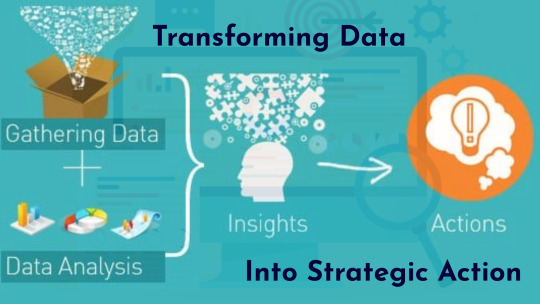
More than numbers, it’s about understanding human bandwidth. This employee wellbeing strategy leads to smarter delegation, increased autonomy, and performance-based adjustments—all essential for a healthy work environment.
Building a Culture of Preparedness
Effective planning isn’t just operational—it’s cultural. It breeds discipline, encourages ownership, and ensures employees are equipped to deliver without overstretching. With real-time insights, feedback becomes continuous rather than occasional. It also supports upskilling opportunities by revealing gaps where intervention is required.
By embedding structure into everyday functions, teams become more responsive and less reactive. The culture shifts from chaotic urgency to composed delivery.
You can also watch : How to Use Live Screen Monitoring in EmpMonitor | Step-by-Step Guide
youtube
Conclusion: The Balance Blueprint
Balance in today’s professional landscape stems not from lowered aspirations, but from strategic and refined execution. Organizations that synchronize effort with available capacity tend to achieve higher productivity and demonstrate greater resilience. With the right structural approach, maintaining equilibrium becomes both attainable and enduring.
The integration of project resource planning allows for thoughtful decision-making that respects both business goals and human limits. It’s not merely a managerial practice—it’s the framework for organizational health. For teams fatigued by inconsistency and overwhelmed by misalignment, this approach marks the transition from burnout to balance.
In a fast-paced world, the organizations that thrive will not be those that push harder, but those that plan smarter—with clarity, control, and compassion.
#resource planning#project planning#project resource management#project resource planner#project resourcing#Youtube
2 notes
·
View notes
Text
Plants Surviving the Worst Mass Extinction
ESP Version ITA Version

When we think of mass extinctions, we often imagine the meteorite impact that killed the dinosaurs at the end of the Cretaceous, 65 million years ago. However, the greatest extinction event occurred between the Permian and Triassic periods, around 250 million years ago, eliminating over 96% of marine species and about 70% of terrestrial vertebrates. But how did plants fare?
According to a study conducted by University College Cork, the University of Connecticut, and the Natural History Museum of Vienna, plants did not experience a mass extinction comparable to that of animals. Nevertheless, their communities were severely impacted or even completely destroyed due to extreme climatic conditions: intense heat, drought, depletion of the ozone layer, widespread wildfires, and contamination by toxic heavy metals.
The study analyzed fossils from the Sydney Basin in eastern Australia, which at the time was located near the South Pole. Researchers gathered sedimentological data (physical, chemical, and depositional characteristics of sediments), biostratigraphic data (fossil distribution within rock layers), and stable carbon isotope ratios from organic matter, reconstructing environmental conditions of that era.
Fossils revealed that the first plants to recolonize devastated landscapes were conifers. Unfortunately, these conifers did not survive a subsequent period of extreme heat known as the Late Smithian Thermal Maximum, which lasted around 700,000 years. In this hostile environment, stress-tolerant, cosmopolitan lycophytes, similar to modern clubmosses, became dominant. Later, during a cooling event (Smithian-Spathian event), large and unusual seed ferns (such as "umkomasialea") emerged, gradually forming more stable and lush forests. These plants laid the foundation for the Mesozoic dinosaur era and the immense fern-dominated forests that persist in our collective imagination.
This research underscores the importance of protecting modern forests because, as the authors emphasize, "forests eventually recover, but the extinction of individual species is forever." Complete ecosystem recovery takes millions of years, and preserving today's plants ensures stability for future food webs and climate systems.
Pic by Fabien Monteil from Pixabay
Source
#Drops of Science#latest news#science#natural sciences#plants#conifers#fern#survival#extinction#fossils#research#Australia#geology#paleobotany#paleontology#mass extinction#Permian-Triassic#climate change#ancient forests#biodiversity#Earth's history
3 notes
·
View notes